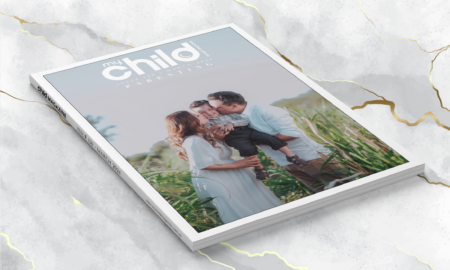

First Sounds: Wait — what was that noise that just came from your baby? It wasn’t a wail… or a burp… or an explosion from her back end (did you begin to think that was all you’d ever hear from her?). The incredible sound you may have just heard is, in fact, a coo!
Your little genius will learn to talk in stages, beginning with vowel sounds, sighs, coos, grunts and gurgles (a step up — and a welcome one, at that — from crying on the communication ladder), the first steps to those first words. But it all starts with your baby’s special wordless vocabulary, your little one’s unique native language.
When to expect it: Your baby may begin vocalizing anytime between the first few weeks and the second month, progressing from random experimental sighs and coos to sounds that are actually directed at toys, pets, objects and people (like you, Mum and Dad). By 6 weeks to 3 months, most babies will have developed a personal repertoire of vowel sounds, cooing and gurgling.
How to help your baby discover it: As fun as it is to listen to your baby’s monologue, it’s even more fun to pick up the conversation by cooing, singing and talking back. Look into her eyes, bring your face close (remember, newborns are as nearsighted as Mr… Magoo). Matching coo-for-coo will be extraordinarily satisfying for her and will encourage the verbal explorations that will eventually (sooner than you think!) lead to that first meaningful “mama” or “dada.”
There’s no right or wrong way to talk to your baby; whether you’re reading a book, chattering about the weather or describing what’s in your aisle at the grocery store, your baby’s language skills benefit. Babies love being talked to, and listening to your language cues and mimicking them back to you is how they learn to talk.
Not quite sure how best to start? Here are a few ideas for ways to talk to your baby that will help her vocalization skills grow — no high-pitched baby talk necessary (unless that’s your style, in which case, go for it!)
Narrate Your Day
Step by step. The simple act of describing what you’re doing as you dress your baby, cook dinner or walk down the street will help your baby begin to recognize words, labels and sound combinations. “Let’s pull on our coat to stay warm and cozy, and now our yellow mittens. And how about a fuzzy green hat?”
Hold (One-sided) Convos
Get into the habit now of talking to your little one, asking questions and supplying answers. Even though your baby won’t understand exactly what you mean, she’ll see you modelling the back-and-forth of conversation. “Do you know where we’re going? To the bus stop! Here we go out the door. Do you think it will be chilly today? Brr, it’s cold outside! Should we hurry to the warm bus? Let’s walk fast.”
Read to Your Baby
Whether it’s Big Red Barn or The Scarlet and the Black, reading allows your baby to hear what sentences sound like.
Describe the Sights & Sounds
Point out colours, objects and noises — from the garbage truck rumbling down the street to the bright red apples stacked in the produce aisle. “There’s the sound of the wind in the trees, swish swish. And here comes the bus, look at the blue stripe on the side, and the bright lights.”
Ask questions — & listen if she answers
Asking lots of questions is an easy way of modelling the give-and-take of conversation while keeping up a friendly patter. Remember to pause long enough to let your little one get a sound or a sigh in edgewise, though — and when she does vocalize, make a point to smile and make eye contact, to show her you’re really listening. She’ll be encouraged by your attention — and excited to try making some new sounds of her own.
What’s Next?
By 3 1/2 months, most babies add laughing to their list of sound effects. Those little sounds will soon be followed by consonant sounds and babbling, which — with enough practice and encouragement from you — will eventually combine to create your cutie’s first basic words. Keep in mind as always, your baby’s personal vocal time line may vary.








You must be logged in to post a comment Login